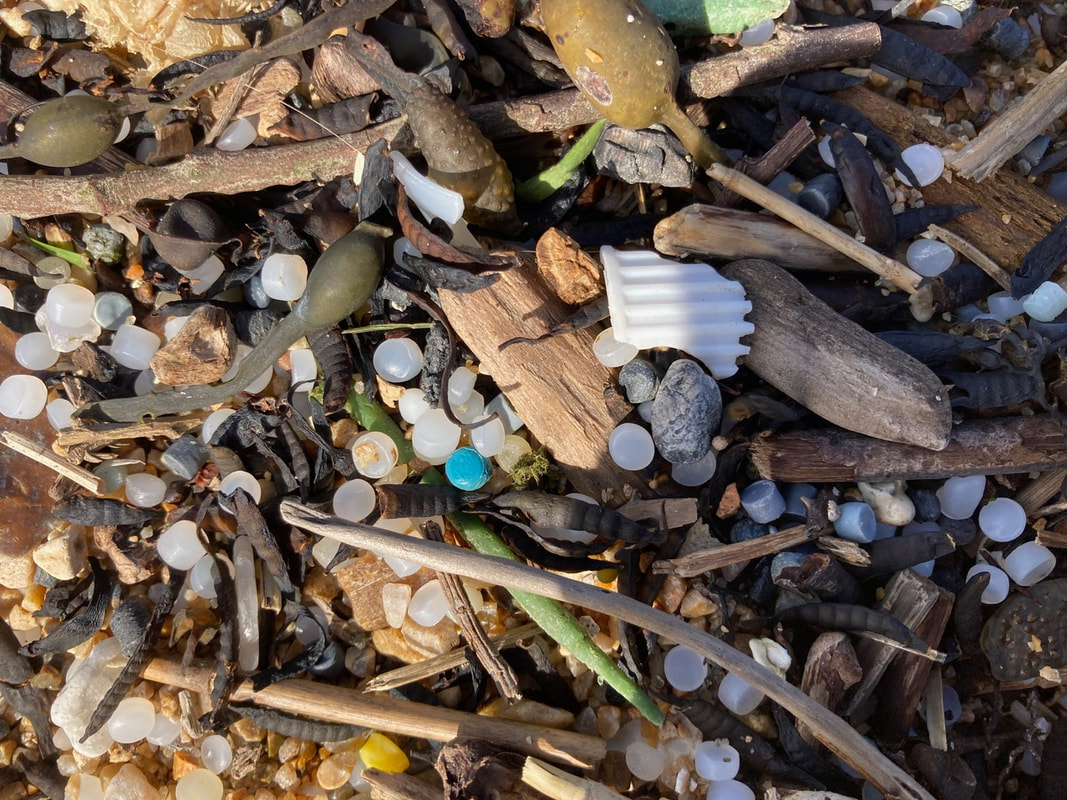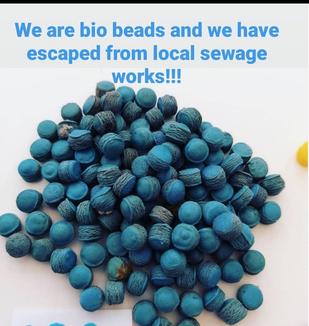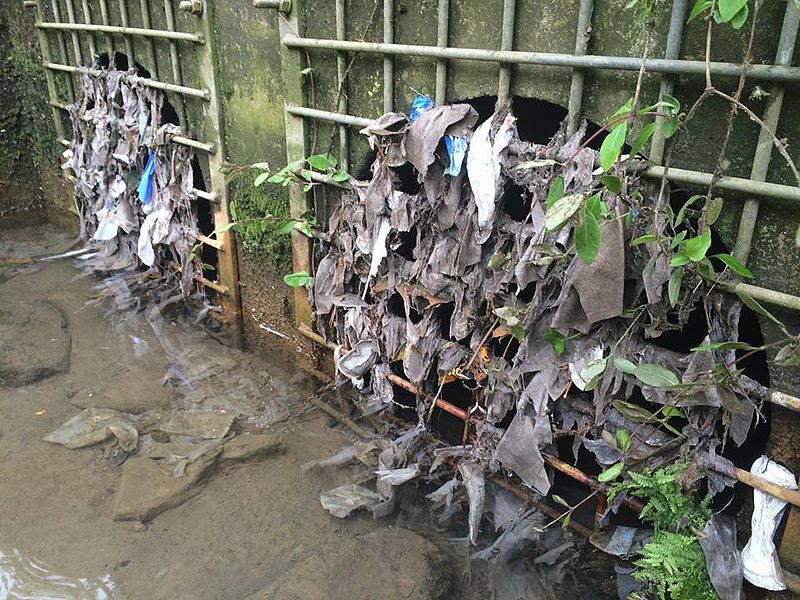|
Yes please, Minister
On Thursday 29th February (leap day) West Dorset’s MP, Chris Loder and his team brought Robbie Moore (Government Minister for Water and Rural Growth) on a flying visit to Charmouth. CROWD members Dana Assinder, Paul Ramsden and Andrew Carey were invited to join the Minister for half an hour on the river bridge by the beach. They presented a Ministerial Briefing on the CROWD (Clean Rivers of West Dorset) campaign to get the Environment Agency (EA) to restart water quality monitoring at the popular beach lagoons in Charmouth and Seatown. The River Char Community Group is a leading member of CROWD. See the press release here Read the Ministerial Briefing here |
|
At the First Deep Clean for Charmouth Beach in January 2024, pioneering beach clean experts NURDLE removed an amazing 1.2 million nurdles and biobeads from the beach and river mouth.
Come and see the next stage of the Deep Clean for Charmouth Beach (10th-13th March) Read our Spring 2024 newsletter with details of everything we're doing, ways you can help and events you can join. GOOD NEWS ON NURDLES AND BIOBEADSOver Easter 2023 Charmouth Beach was inundated with more plastic nurdles, in addition to the nurdles (plastic raw materials used in manufacturing) and biobeads (plastics used in sewage treatment plants) already littering the beach and rivermouth. Now the Nurdle Organisation is conducing an intensive clean-up operation in Spring 2024. See the full details of the plan here. |
Charmouth Dragon
The FIRST Charmouth Dragon River Festival happened on Saturday - 27th May, 2023
If you want to help in future in any way, please contact Sandra on 07734 138942 or by email
_____________________________________
Read all about it on our Dragon page
If you want to help in future in any way, please contact Sandra on 07734 138942 or by email
_____________________________________
Read all about it on our Dragon page
Imagine a river THAT's
|
microplastics on our beachEaster 2023, Dana Assinder took these photos of microplastics on our beach:
|
What we need more than anything is for the government to give the Environment Agency teeth. See this Nov. 2022 Financial Times article on how the UK Government has underfunded the agency that is designed to protect our rivers from pollution:
England’s rivers pay the price for hollowed-out Environment Agency
England’s rivers pay the price for hollowed-out Environment Agency
Be inspired:
“We are the generation who has been handed the climate and ecological crisis and we will have to live with the decisions you make today. You have nine years to make the changes needed. You have to fix it. We have to live with it.
It’s the year 2050. Imagine this.... A coast with the sight of a surge of redshank, knot, and oystercatcher flocking in, to breed, make their home and thrive. A coastline where the cry of tern and flute of curlew competes with wind and wave. A place where the salty air is fresh and untainted by the stench of human waste and the shoreline is free from plastic. The feel of rocks encrusted with barnacles, periwinkles, and bladderwrack. An intact marine ecosystem with mammal, bird and fish in abundance. Harmonious and majestic; a place to get lost in. One that can persist for generations into the future for all to love and enjoy...." read the full piece here
“We are the generation who has been handed the climate and ecological crisis and we will have to live with the decisions you make today. You have nine years to make the changes needed. You have to fix it. We have to live with it.
It’s the year 2050. Imagine this.... A coast with the sight of a surge of redshank, knot, and oystercatcher flocking in, to breed, make their home and thrive. A coastline where the cry of tern and flute of curlew competes with wind and wave. A place where the salty air is fresh and untainted by the stench of human waste and the shoreline is free from plastic. The feel of rocks encrusted with barnacles, periwinkles, and bladderwrack. An intact marine ecosystem with mammal, bird and fish in abundance. Harmonious and majestic; a place to get lost in. One that can persist for generations into the future for all to love and enjoy...." read the full piece here
What to do if you see sewage in the river or in the sea at CHARMOUTH
1. Take photos and immediately call Wessex Water on 0345 600 4600. Give an exact location and description.
2. Follow up with an email to them at customer.services@wessexwater.co.uk (copied to rivercharmonitoring@gmail.com)
If you spot sewage pollution in the River Lim or on the beaches at LYME REGIS
1. Take photos and immediately call South West Water on 0344 346 2020. Give an exact location and description.
2. Then follow up with an email to the River Lim Monitoring Group at enquiries@turnlymegreen.co.uk)
Signs of sewage pollution include:
toilet paper, wipes, faeces, condoms, sanitary products in a river or in the sea, on a riverbank or the beach ~ a river appearing cloudy or milky ~ grey feathery ‘sewage fungus’ on the bed of a river ~ dead or gasping fish ~ a noticeable sewage smell
[There are many reasons why foam appears in rivers and near the seashore. Some of these are completely natural. Do not make an emergency call about foam unless you have other evidence to suggest that it is caused by sewage.]
1. Take photos and immediately call Wessex Water on 0345 600 4600. Give an exact location and description.
2. Follow up with an email to them at customer.services@wessexwater.co.uk (copied to rivercharmonitoring@gmail.com)
If you spot sewage pollution in the River Lim or on the beaches at LYME REGIS
1. Take photos and immediately call South West Water on 0344 346 2020. Give an exact location and description.
2. Then follow up with an email to the River Lim Monitoring Group at enquiries@turnlymegreen.co.uk)
Signs of sewage pollution include:
toilet paper, wipes, faeces, condoms, sanitary products in a river or in the sea, on a riverbank or the beach ~ a river appearing cloudy or milky ~ grey feathery ‘sewage fungus’ on the bed of a river ~ dead or gasping fish ~ a noticeable sewage smell
[There are many reasons why foam appears in rivers and near the seashore. Some of these are completely natural. Do not make an emergency call about foam unless you have other evidence to suggest that it is caused by sewage.]
What we're doingWe're:
The Lower Char Community Project received a substantial grant in June 2022 from Wessex Water Foundation via Dorset Community Foundation. We will be using this funding to do three specific things:
|
NEWS UPDATESOn 29th February 2024 a small group of committed residents stood beside the River Char with their MP and the Government Minister for Water and Rural Growth to hand over a list of new campaign aims and call for the Minister’s support.
In January 2024, the Nurdle Organisation and a small crowd of committed residents came and cleared up an amazing 1.2 million microplastic beads from our river mouth.
ITV News: Dorset's River Lim now 'ecologically dead' after sewage spillages, campaigners say. Details here
GREAT NEWS! 7th Feb. 2023: We launch our Campaign to Clean Up the River Char. Details here
GREAT NEWS! 21st Nov. 2022: South West Water have confirmed that they have completed the clean-up of biobeads at their Uplyme Sewage Treatment Works. Details here
Here's a video of the Green Party's Baroness Jenny Jones's visit to Lyme Regis in September 2022 to learn more about pollution in our rivers.
|
Nurdles and BiobeadsA quick look along Charmouth Beach will reveal a horrifying amount of plastic. This ranges from bags and bottles to shards of degraded plastic as well as nurdles (the raw material of manufactured plastics) and biobeads (used in the sewage treatment plant above Lyme Regis - but not at the Charmouth Sewage Works). Find out more on our plastics page. |
sewage spillsThere's been a lot in the news about sewage spills recently, including those in and near Charmouth. We've had a tour of Charmouth Sewage Treatment Works and lots of information from Wessex Water. We've prepared a summary page and a detailed report on how these spills happen locally, how often the happen and what we can do together to help address the problem. Sign up below if you'd like updates. |
WildlifeA lot of the work going on further up the river is designed to record and support the wildlife that lives on and around the river. We are doing our bit with a year-round water quality monitoring programme, gathering sightings of birds and other wildlife (some, like mink, not so native or desirable) and celebrating the river's own wild life. Sign up below if you'd like to help. |
Sign up to join the River Char Community Project here and we'll send you our occasional newsletter with updates and ways you can help.
Here's why that sign is at the river mouth:
The Environment Agency measures levels of E Coli and Intestinal Enterococci at the pool of the River Char (just before the beach at Charmouth). 20 measurements were made between September 2018 and September 2019 (last figures available).
E Coli levels ranged from a low of 480 to a high of 18,000. They averaged 3,135. The acceptable upper limit is 900. The River Char was more than three times over that level. [In case you're wondering, on 13th July 2012 they were over 100,000. On 22nd May 2014 they were 115,000. In October 2014 they were 210,000. That would kill an ox.]
Intestinal Enterococci levels ranged from 27 to 29,000. They averaged 2,750. The acceptable upper limit is 330. The River Char was more than eight times over that level.
Intestinal Enterococci and some strains of E coli can cause urinary tract infections, gastroenteritis, endocarditis, diverticulitis, meningitis, spontaneous bacterial peritonitis, colitis and Crohn's disease.
The Environment Agency measures levels of E Coli and Intestinal Enterococci at the pool of the River Char (just before the beach at Charmouth). 20 measurements were made between September 2018 and September 2019 (last figures available).
E Coli levels ranged from a low of 480 to a high of 18,000. They averaged 3,135. The acceptable upper limit is 900. The River Char was more than three times over that level. [In case you're wondering, on 13th July 2012 they were over 100,000. On 22nd May 2014 they were 115,000. In October 2014 they were 210,000. That would kill an ox.]
Intestinal Enterococci levels ranged from 27 to 29,000. They averaged 2,750. The acceptable upper limit is 330. The River Char was more than eight times over that level.
Intestinal Enterococci and some strains of E coli can cause urinary tract infections, gastroenteritis, endocarditis, diverticulitis, meningitis, spontaneous bacterial peritonitis, colitis and Crohn's disease.
|
Further Reading
|
Resources
Is my river fit to play in? Check the online map at the Rivers Trust
The Water Companies
|
Other River Groups
|










